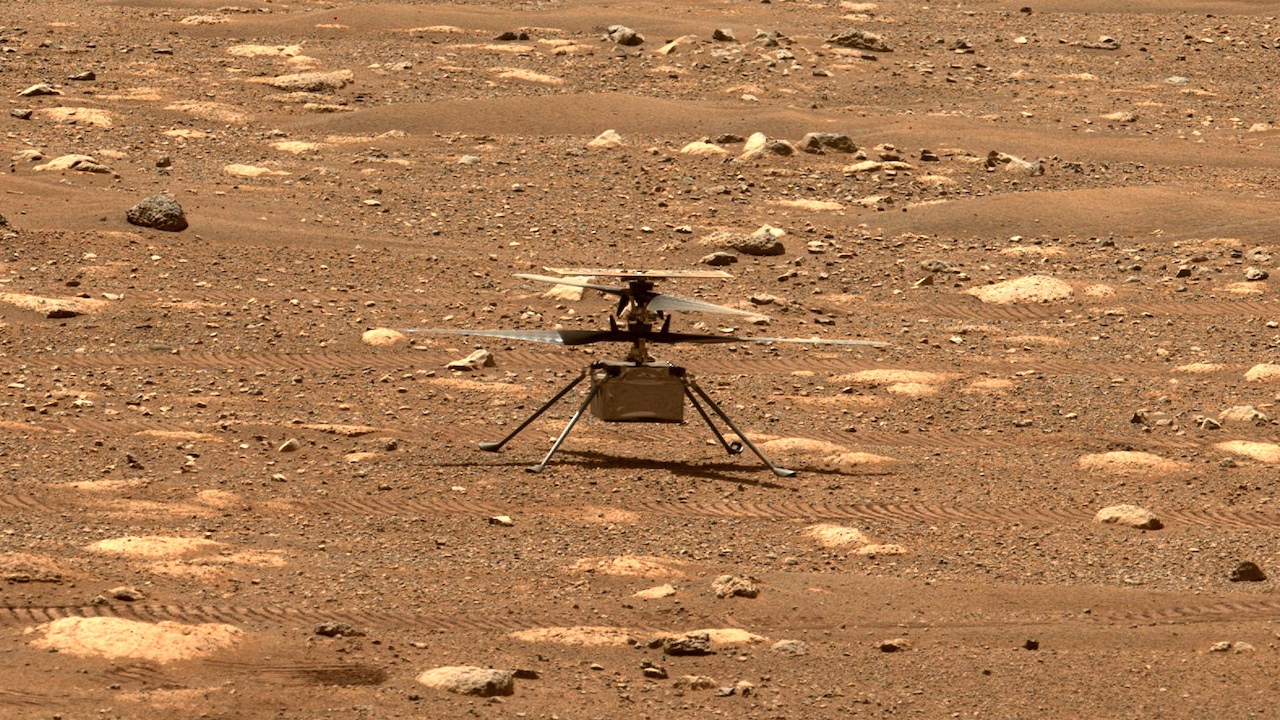How Microsoft Designs For The Future Of Human-AI Interaction

Table of Contents
Microsoft's Vision for Human-AI Collaboration
Microsoft envisions a future where humans and AI work seamlessly together, augmenting each other's capabilities to achieve more than either could alone. This isn't about replacing humans with AI, but rather empowering users with intelligent tools that enhance productivity, creativity, and problem-solving. This collaborative approach is central to Microsoft's long-term commitment to responsible AI development.
- Empowering Users, Not Replacing Them: Microsoft's AI initiatives focus on providing tools that assist humans, not replace them. The goal is to leverage AI's strengths to amplify human intelligence and efficiency.
- Boosting Productivity and Creativity: Microsoft integrates AI into its products to streamline workflows, automate tasks, and unlock new creative possibilities. From intelligent assistants to data analysis tools, AI is designed to be a powerful partner for users.
- Responsible AI Development: Microsoft's commitment to responsible AI is deeply ingrained in its development process, prioritizing ethical considerations at every stage. This includes transparency, fairness, and accountability in AI systems.
Designing for Inclusivity and Accessibility in AI
Microsoft recognizes that AI systems must be accessible and beneficial to everyone, regardless of their abilities or background. This commitment to inclusivity drives the design of AI systems that are fair, equitable, and usable by all.
- Bias Mitigation through Diverse Datasets: Training AI models on diverse and representative datasets is crucial for minimizing bias and ensuring fairness. Microsoft actively works to address potential biases in its AI algorithms.
- Accessibility Features for All Users: Microsoft incorporates accessibility features into its AI products to ensure usability for people with disabilities. This includes features like screen reader compatibility, alternative input methods, and customizable interfaces.
- Inclusive Interface Design: The design of user interfaces for AI systems considers the diverse needs and preferences of users, promoting ease of use and accessibility for everyone.
- Examples of Inclusive AI: Microsoft's Seeing AI app, for example, uses AI to describe the world to visually impaired users, demonstrating a practical application of inclusive AI design. Other products like the inclusive design principles within Microsoft 365 further highlight this commitment.
Prioritizing Ethical Considerations in AI Development
Ethical considerations are paramount in Microsoft's AI development. The company is committed to building AI systems that are transparent, fair, and accountable.
- Explainable AI (XAI): Understanding how AI systems arrive at their decisions is crucial for trust and accountability. Microsoft invests heavily in research and development of explainable AI techniques.
- Robust Testing and Validation: Rigorous testing and validation processes are implemented to identify and mitigate potential risks and unintended consequences associated with AI systems.
- Addressing Bias and Ensuring Fairness: Microsoft employs various techniques to detect and mitigate bias in AI algorithms, ensuring fairness and equitable outcomes.
- Ongoing Research in AI Ethics: Microsoft actively participates in ongoing research and development in AI ethics, collaborating with researchers and experts globally to address emerging challenges.
The Role of Conversational AI in Shaping the Future of Interaction
Conversational AI, encompassing chatbots and virtual assistants, is revolutionizing human-AI interaction. Microsoft is a key player in this transformation.
- Advanced Natural Language Processing (NLP): Microsoft's advancements in NLP enable more natural and intuitive interactions between humans and AI systems.
- Engaging Conversational Interfaces: The company is developing more engaging and user-friendly conversational interfaces, making AI more accessible and approachable.
- Applications Across Sectors: Microsoft's conversational AI technologies are finding applications in diverse sectors, including customer service, healthcare, and education.
- Examples of Microsoft's Conversational AI: Products like Cortana and the Azure Bot Service showcase Microsoft's leading role in the development and deployment of conversational AI.
The Future of Human-AI Interaction: Emerging Trends and Challenges
The future of human-AI interaction is full of exciting possibilities and significant challenges. Emerging technologies such as augmented reality (AR), virtual reality (VR), and the Internet of Things (IoT) will further integrate AI into our lives.
- AI in Wearable Tech and Smart Devices: AI will increasingly be integrated into wearable technology and smart devices, creating more personalized and seamless interactions.
- Advancements in Human-Computer Interaction (HCI): New HCI paradigms will be developed to optimize the way humans interact with AI systems.
- Addressing Job Displacement and Societal Impact: Careful consideration must be given to the potential impact of AI on employment and society as a whole.
- Collaboration Between Stakeholders: Addressing the challenges and opportunities of AI requires ongoing collaboration between researchers, developers, and policymakers.
Conclusion
Microsoft's approach to designing for the future of human-AI interaction centers on a commitment to ethical, inclusive, and user-friendly AI systems. By prioritizing responsible AI development, focusing on human empowerment, and fostering collaboration, Microsoft is shaping a future where AI serves as a powerful tool for progress and positive change. The ongoing need for innovation in this field is paramount, and continued research and development will be essential to navigate the complex challenges and realize the full potential of human-AI interaction. Learn more about how Microsoft is designing for the future of human-AI interaction and explore the innovative solutions shaping this exciting field on the [link to relevant Microsoft resources].

Featured Posts
-
 Blue Origin Cancels Launch Vehicle Subsystem Issue Delays Mission
Apr 26, 2025
Blue Origin Cancels Launch Vehicle Subsystem Issue Delays Mission
Apr 26, 2025 -
 Returning To A Former Employer After A Layoff Pros Cons And Considerations
Apr 26, 2025
Returning To A Former Employer After A Layoff Pros Cons And Considerations
Apr 26, 2025 -
 Lente Woordenlijst Alles Wat Je Moet Weten Over De Lente
Apr 26, 2025
Lente Woordenlijst Alles Wat Je Moet Weten Over De Lente
Apr 26, 2025 -
 Political Fallout Analyzing Newsoms Actions Against Democrats
Apr 26, 2025
Political Fallout Analyzing Newsoms Actions Against Democrats
Apr 26, 2025 -
 The Visual Storytelling Of Sinners Exploring The Mississippi Deltas Landscape
Apr 26, 2025
The Visual Storytelling Of Sinners Exploring The Mississippi Deltas Landscape
Apr 26, 2025
Latest Posts
-
 Concerns Raised Over Hhss Appointment Of Anti Vaccine Activist To Study Debunked Autism Vaccine Theories
Apr 27, 2025
Concerns Raised Over Hhss Appointment Of Anti Vaccine Activist To Study Debunked Autism Vaccine Theories
Apr 27, 2025 -
 Hhs Under Fire For Selecting Anti Vaccine Advocate To Investigate Autism Vaccine Link
Apr 27, 2025
Hhs Under Fire For Selecting Anti Vaccine Advocate To Investigate Autism Vaccine Link
Apr 27, 2025 -
 Hhss Controversial Choice Anti Vaccine Advocate To Examine Debunked Autism Vaccine Claims
Apr 27, 2025
Hhss Controversial Choice Anti Vaccine Advocate To Examine Debunked Autism Vaccine Claims
Apr 27, 2025 -
 Anti Vaccine Activists Role In Hhs Autism Vaccine Review Raises Concerns
Apr 27, 2025
Anti Vaccine Activists Role In Hhs Autism Vaccine Review Raises Concerns
Apr 27, 2025 -
 Hhs Investigation Into Debunked Autism Vaccine Link Sparks Outrage
Apr 27, 2025
Hhs Investigation Into Debunked Autism Vaccine Link Sparks Outrage
Apr 27, 2025
